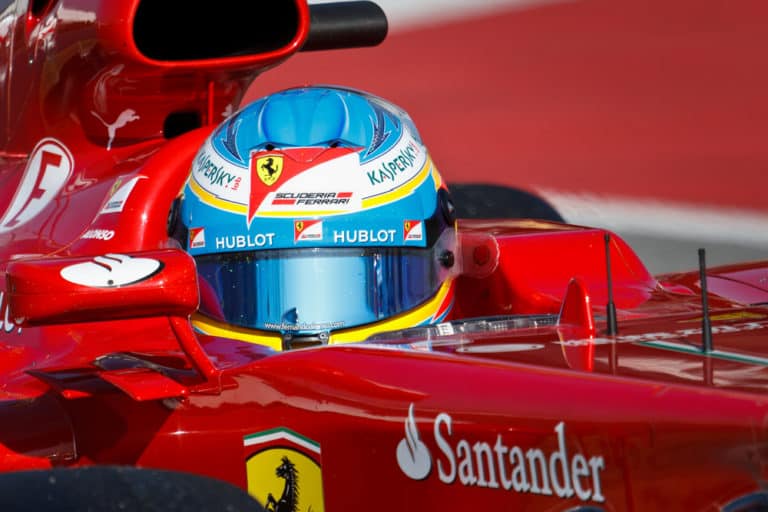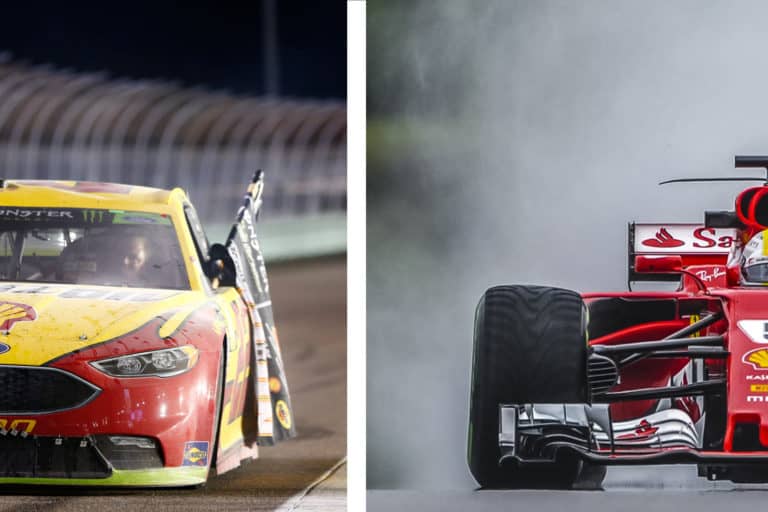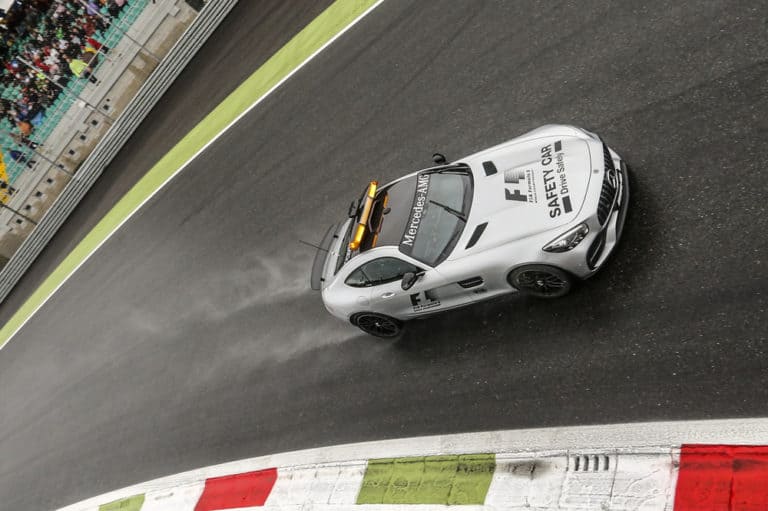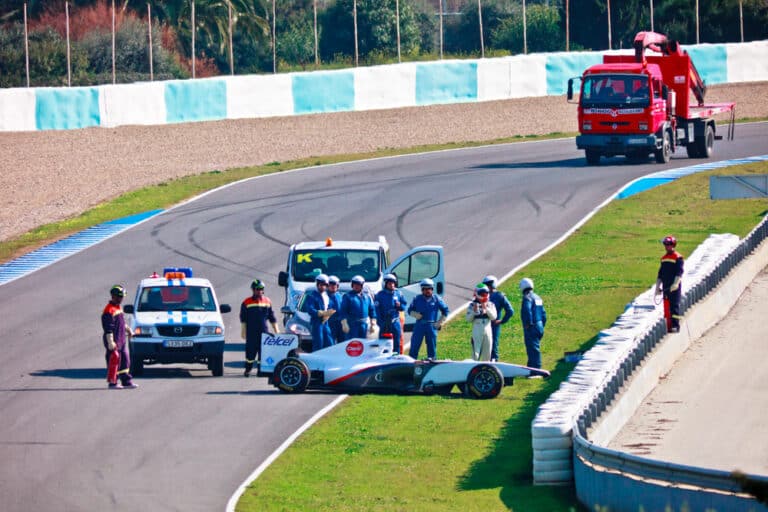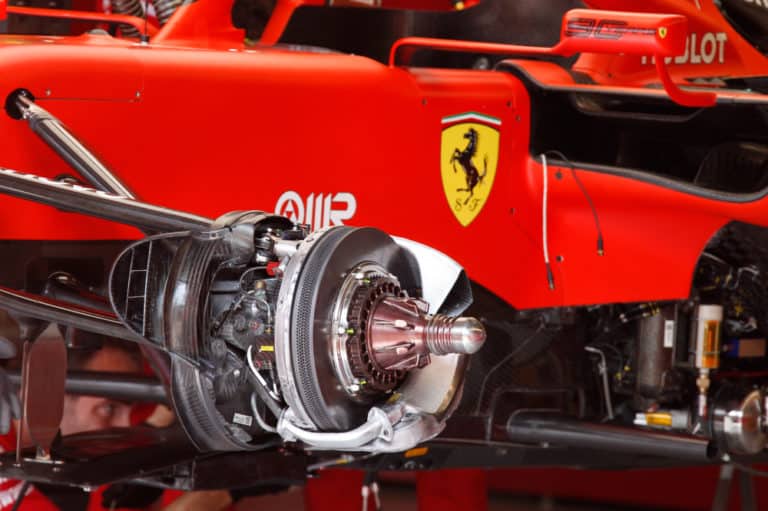Formula 1 is a racing discipline that arguably sits at the pinnacle of every other motor racing discipline. The Formula 1 car races at speeds similar to Indy cars. It attracts higher online, and television viewership than any other motorsport, and the successful drivers become cult-like stars to their fans.
Compared to the rest of the current field of drivers, Max Verstappen takes the crown as the most aggressive driver. In previous years the kings of aggression were Kevin Magnussen, James Hunt, Michael Schumacher, and Pastor Maldonado, to name just a few.
Being a successful Formula 1 racing driver involves an exciting balance between bravery, outright driving skill, the ability to develop strategies on the spot, multi-tasking, ambition, and controlled aggression. Assuming all the other factors line up, how aggressively does a driver need to drive to become a champion?
If you’re looking for some F1 merchandise, check out the awesome stuff at the official F1 store here.
The Most Aggressive Formula 1 Driver Is Max Verstappen
Max Verstappen developed a reputation for being very aggressive in previous years. There is a belief that, more recently, he has started to calm down, but he is renowned as a driver who will not give an inch.
His incredible skill level allows him to race on the absolute legal limit but not give a millimeter more space than required. Lewis Hamilton and Sebastian Vettel have both said that if they run next to Max Verstappen, they always give him more space than any other driver because he will push past if they don’t.
In 2016, during his first year of racing Formula 1, the stewards warned him about his aggressive driving style. Ironically, Lewis Hamilton came to his defense, saying the mediators should forgive him due to his age.
Perhaps Lewis has had second thoughts about the grace he applied to Max. After the 2021 Saudi Grand Prix, Max was awarded a ten-second penalty for pushing Lewis Hamilton off the road.
He is one of the most skilled Formula 1 drivers in the sport’s history; however, he is reputed for pushing the boundaries of sportsmanship. The stewards’ difficulty is deciding whether he committed an infraction or simply a daring move that may not have worked out.
Martin Brundle has commented, “such is [his] car control and cunning, he’s sometimes able to pull off the audacious moves and leave a margin of doubt as to whether it’s hard racing or simply a professional foul.”
In a nail-biting end to the 2021 season, Max won the world championship against Lewis Hamilton after a questionable decision made by Michael Massi, the race controller.
Kevin Magnussen Was A Very Controversial Formula 1 Driver
Kevin Magnussen raced in formula 1 between 2014to 2020. He was one of the least liked drivers on the circuit, mainly due to his aggressive and uncompromising driving style.
After an impressive first Formula 1 race in Australia in 2014, where he came in second, Kevin Magnussen’s career never really went anywhere – except in the aggression stakes, that is.
An example of aggression, which deteriorated into a foul, was at the Hungarian Grand Prix in 2017. In the 9th last lap, Nico Hulkenberg tried to overtake him on the straight; not wanting to lose his 11th position Kevin Magnussen forced Nico off the road and onto the grass.
The stewards penalized him with a five-second penalty. After the race, Niko interrupted Kevin Magnussen while being interviewed and said he was the “most unsporting driver on the grid.” Magnussen’s typically aggressive response was that Nico could “suck his b***s.”
James Hunt Had A Reputation On And Off The Formula 1 Track
James Hunt raced as a Formula 1 driver between 1973 and 1979. He won the driver’s world championship in 1976. Nikki Lauda said that he was one of the most skillful Formula 1 drivers and that he could race at full speed with just three inches separating the cars, and nothing would happen because of both drivers’ skills.
Off the track, he was renowned as a party animal who claimed he had
- If there was a party with alcohol, sex, and drugs that James Hunt knew about, there was a good chance you would find him there.
- He was happy to admit that he used cocaine and pills.
- “Sex, breakfast of champions” were words he had sewn onto his racing overalls.
- Slept with 35 British Airways hostesses in a few nights before the Japanese Grand Prix was run.
- He was caught having sex immediately before the same race.
- When police tried to pull him over for speeding, he raced away and avoided three police cars.
He did not confine his exploits just to his off-track reputation. He was a driver who was renowned for having prodigious levels of skill. His on-track antics included.
- The nickname “Hunt the Shunt” followed him throughout his racing career.
- In the 1977 Dutch Grand Prix, James Hunt pushed Mario Andretti off the track where both crashed. The move was deliberate.
- In the same year, he crashed at the Canadian Grand Prix, and when a marshal helped him out of the car, James Hunt turned and punched him full on in the face with a right hook, causing the marshal to hit the ground.
Seven Times World Formula 1 Champion Michael Schumacher
Michael Schumacher was a contradiction in terms. On the one hand, he epitomized everything great about Formula 1. He had terrific skill levels; he drove very fast; he won races, and off-track was a gracious clean-living ambassador for the sport.
To counter this, we have Michael Schumacher, the villain, who could be positively villainous and is the only driver disqualified from a Formula One Championship. His list of misdemeanors is long and paints an interestingly counter-image of a driver whom F1 history has looked kindly on.
- In the last race of the 1994 season, Michael deliberately hit Damon Hill in the Williams team car, taking him out of the race. By doing that, Schumacher won the championship with one point to spare.
- In the 1997 European Grand Prix, Schumacher deliberately turned in on the Williams of Jacques Villeneuve, causing him to crash. Schumacher was disqualified for the rest of the season for causing this maneuver.
- The punishment didn’t stop him in the 1998 Silverstone Grand Prix. He was given a stop-go penalty for passing Alexander Wurz under Safety Car condition during the race. In terms of the rules, he had to pit and incur the stop/go penalty within three laps. The sentence was issued with two laps to go, so with only two laps left, Schumacher stayed out until the last lap, and he dived into the pits and won the race from the pit lane. The result was that he won the Grand Prix.
- In the 2002 Austrian Grand Prix, he was being led by his teammate Rubens Barrichello. He persuaded his team to force Barichello to let him pass in the “interests of the championship.”

Pastor Maldonado Raced In F1 From 2011 To 2015
It is not known whether Pastor Maldonado is a villain, unlucky, or just a lousy driver, but in the four years, he raced in Formula 1.
His reputation for crashing is legendary.
- An honorable mention is an incident from before he started racing Formula 1. During a Formula Renault 3.5 event in Monaco in the 2005 season, he did not slow down following an accident, and he ran over a marshal causing him serious injuries. He was banned for the next four races and was barred from the principality of Monaco for life.
- In the 2012 Monaco Grand Prix, he deliberately hit Sergio Perez; this was followed by six further accidents when he took out Pedro de la Rosa, Hamilton, Perez, Paul di Resta, and Timo Glock.
- He was awarded three penalties in the Belgium Grand Prix.
- In 2014 he collided with Esteban Gutiérrez at the Bahrain Grand Prix, causing Esteban’s car to roll; this earned him a whole raft of penalties, including
- A ten-second penalty
- Three points on his FIA Super license
- A five-place grid penalty at the following Chinese Grand Prix
- In his final season of the championship, he continued to cause chaos and mayhem throughout the season.
Conclusion
Formula 1 is a fast-paced, action-packed sport that needs a level of driver aggression for drivers to succeed.
At some race or point in a championship, each driver can be accused of being aggressive. Lewis Hamilton freely admits that he was aggressive in his rookie years. The difference between a few aggressive incidents and a pattern that lasts over an F1 career is what qualifies some drivers to appear in the article.
References
- https://www.goodwood.com/grr/race/historic/2020/9/the-five-most-accident-prone-f1-drivers/
- http://m.f1reader.com/news/tag/villains
- https://www.mirror.co.uk/sport/formula-1/formula-1-ace-james-hunts-9133348
- https://www.foxsports.com.au/motorsport/formula-one/f1-2021-max-verstappen-world-champion-abu-dhabi-grand-prix-villain-crash-christian-horner-red-bull-news-feature/news-story/66715277cf0200be545715bfd401652e

